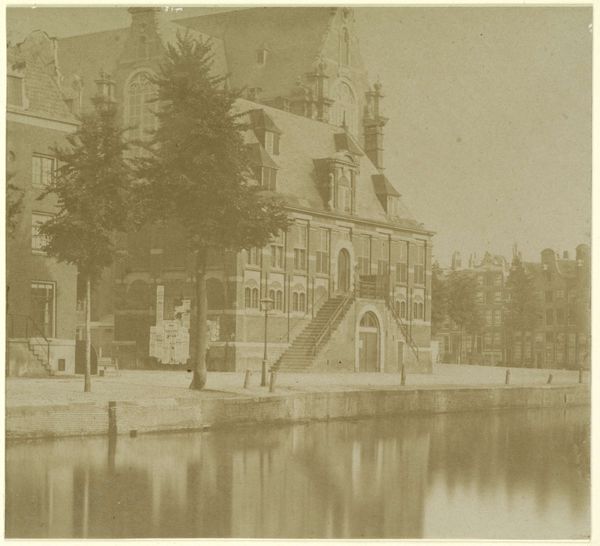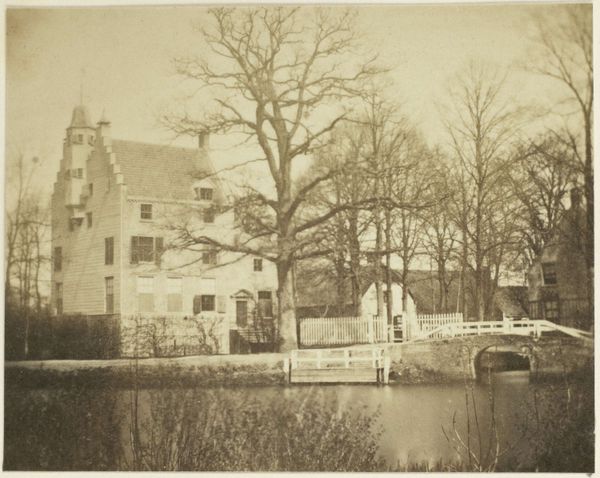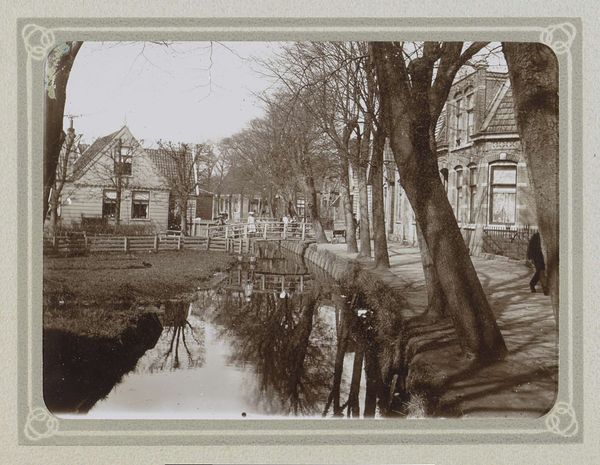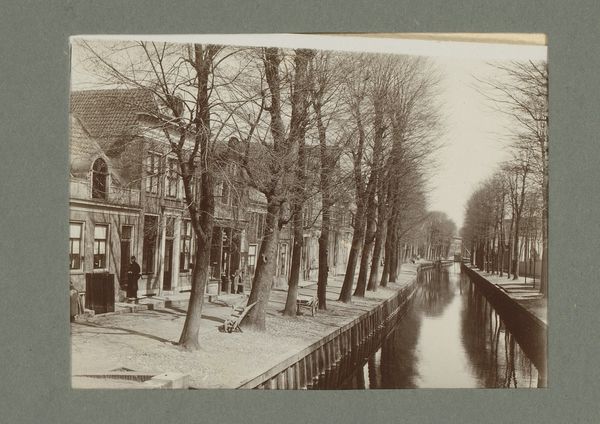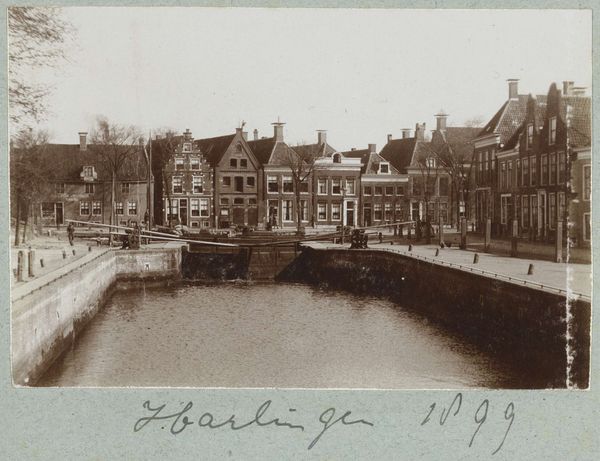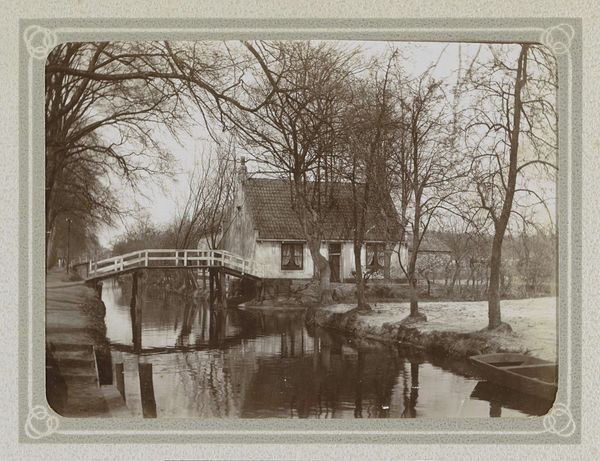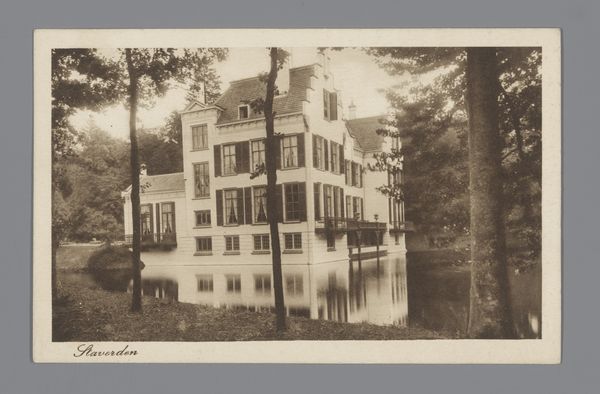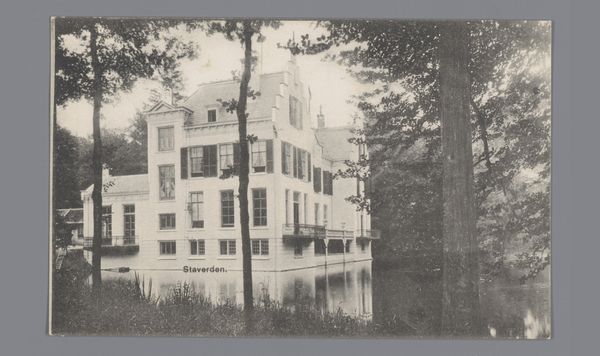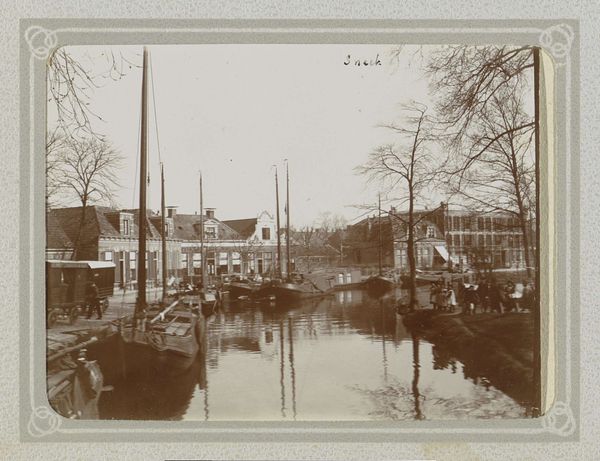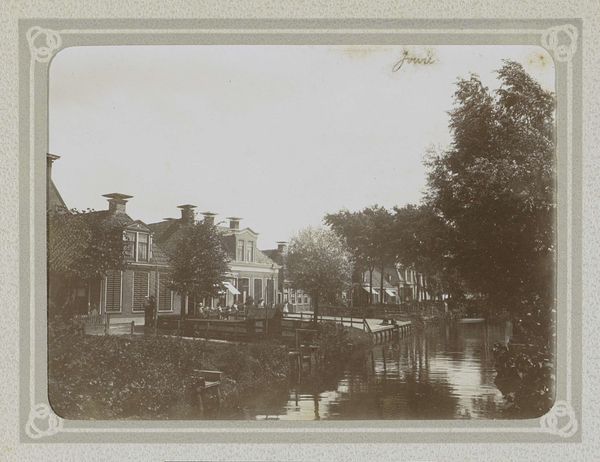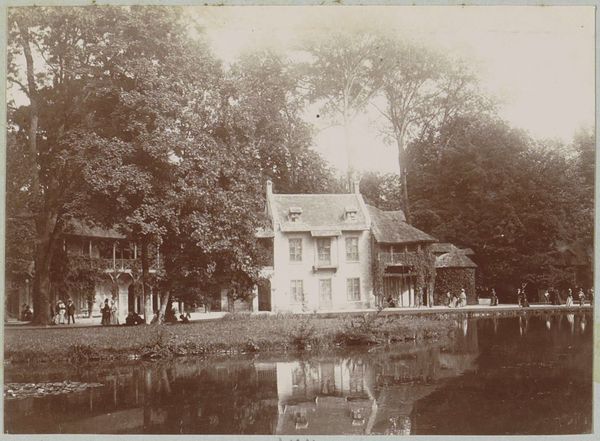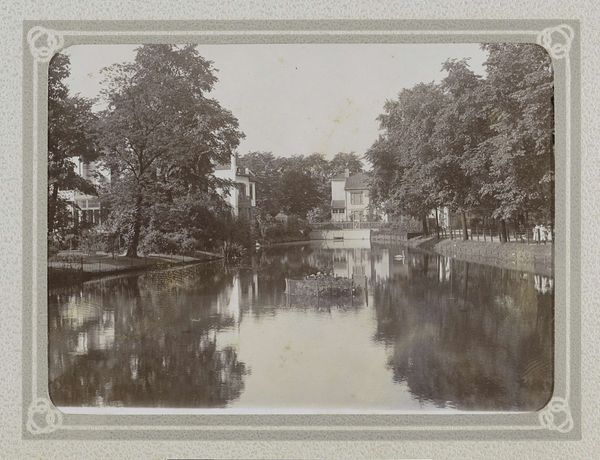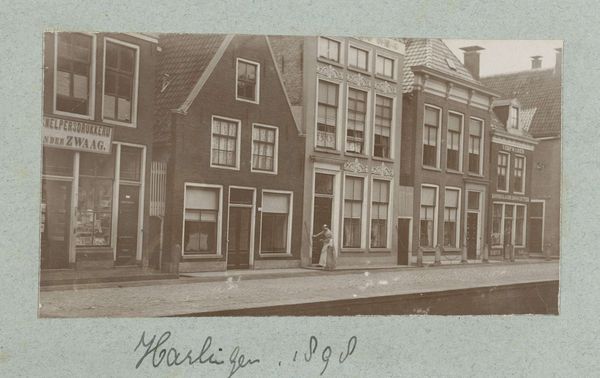
photography, gelatin-silver-print
#
dutch-golden-age
#
archive photography
#
photography
#
historical photography
#
gelatin-silver-print
#
cityscape
Dimensions: height 78 mm, width 109 mm, height 242 mm, width 333 mm
Copyright: Rijks Museum: Open Domain
Curator: Looking at this gelatin silver print, I’m immediately drawn to its quiet stillness. The tones are muted, almost melancholic. Editor: That’s an interesting response. What grabs my attention is the subject matter; it's "Gezicht op de Rommelhaven te Harlingen" – a view of the Junk harbor in Harlingen – taken around 1898 to 1900 by Frits Freerks Fontein Fz. I'm fascinated by what that 'Junk harbor' label tells us about urban spaces and what they signify. Curator: It's curious how a photograph, with its claim to objective reality, can also subtly obscure or frame. The materiality here, the gelatin silver, isn't inherently fancy. It was the standard photographic process, but what choices were made to produce the final product? What type of camera was being used, what was its availability to people like Fz.? Editor: Absolutely. And we can also see that the photo, with its straight-on depiction of those townhouses, is less about highlighting architectural genius and more about conveying a scene of everyday life for the emerging middle classes and how those locations provided a means for them to meet, purchase and then trade their own labor and production to then be sold throughout the Dutch countryside. The "Newcastle" sign indicates just one of the resources which allowed people to earn and make ends meet for the town to function at large. Curator: I see that— the material culture, writ small. Even the very surface is intriguing. How did he source it, use it? How many prints? This photograph isn’t about romanticizing Harlingen; it's a record of work. A specific class is reflected in this photographic medium—those who could afford to acquire the latest tools and then utilize them in their daily affairs to better communicate or simply remind themselves and those around of a simpler life or process that existed. Editor: I agree. Seeing the architecture and composition laid out with a simple, utilitarian medium underscores the rise of urban planning, municipal oversight, and class divisions in photography. But those trees and harbor serve as both an advantage and limit of those in that sphere. Curator: That's where an analysis like this brings an interesting edge to a discussion such as this one—it keeps one grounded to consider the more obvious markers of the photograph's existence such as physical materials instead of other cultural theories or discussions that stem too far out and can dilute from the discussion itself. Editor: And likewise for a photograph so utilitarian in process, those reflections and physical indicators could easily get lost. We see, finally, why historical context and awareness, are fundamental components.
Comments
No comments
Be the first to comment and join the conversation on the ultimate creative platform.
